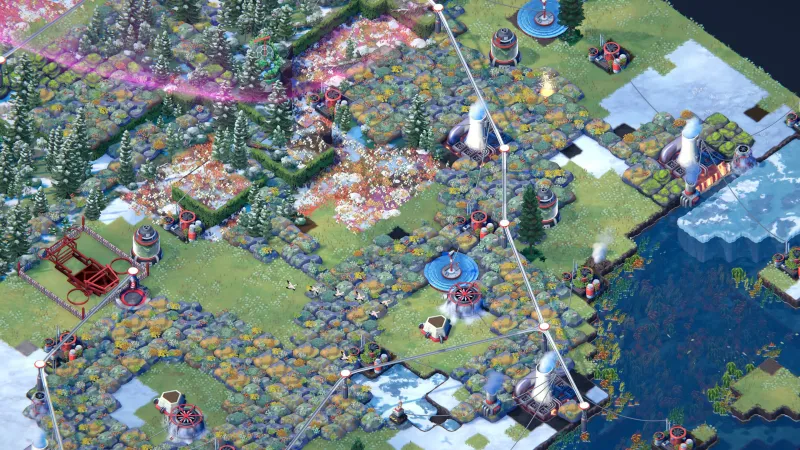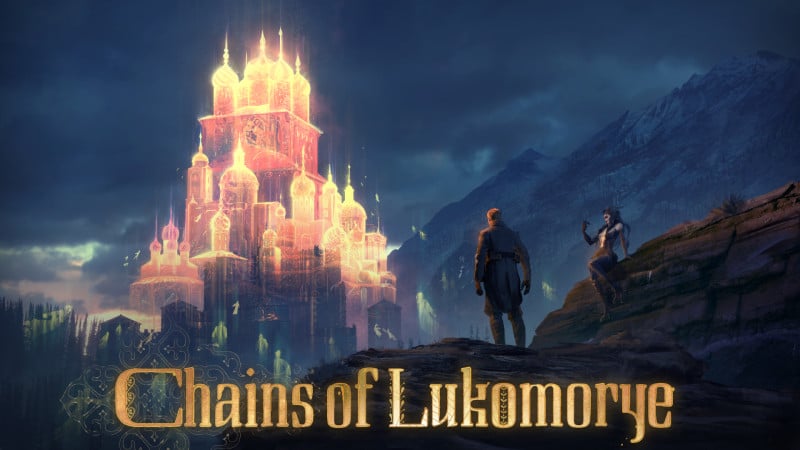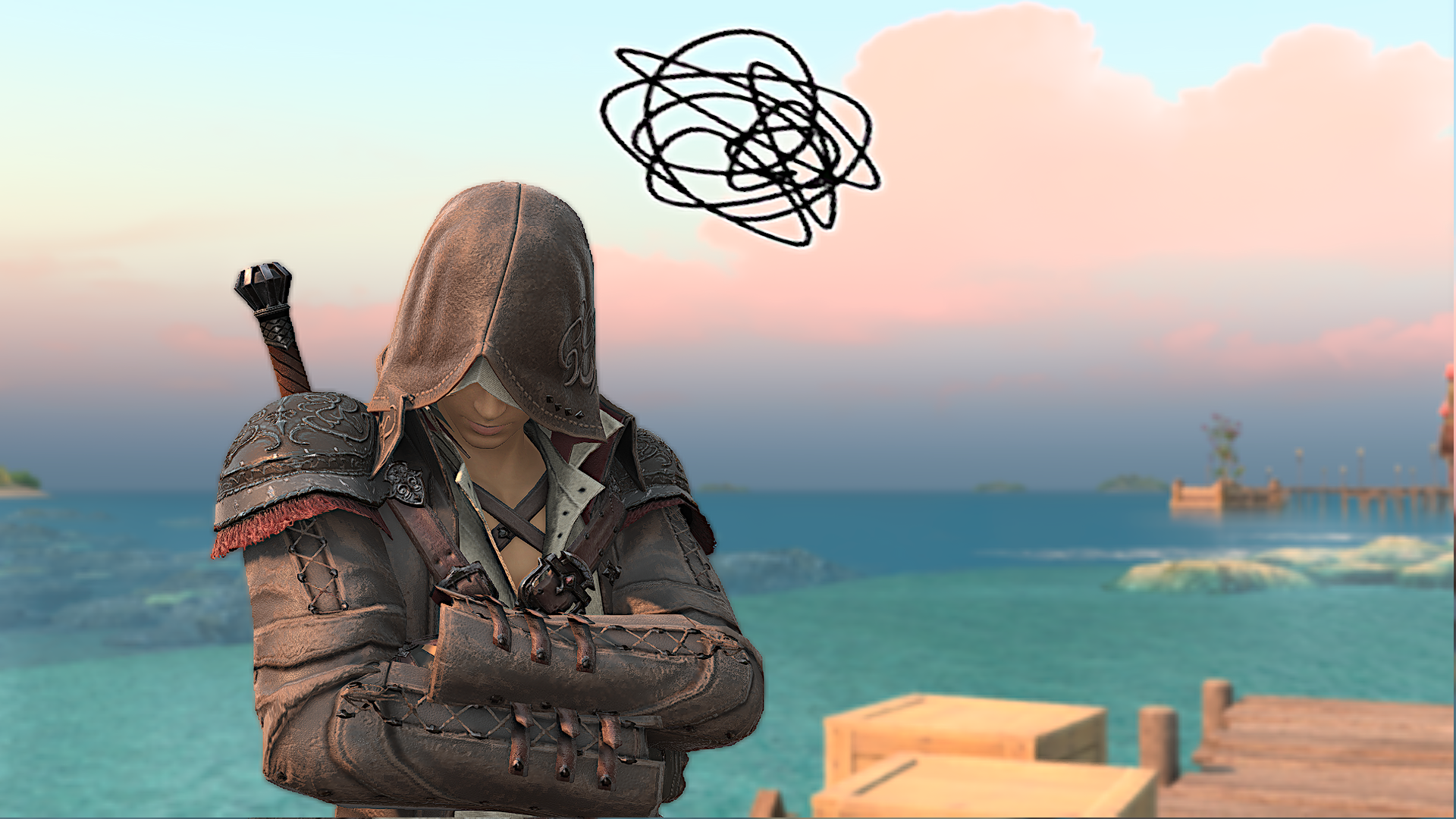
Reviewed on: PC Platform: PC, iOS Publisher: Devolver Digital Developer: Free Lives Release: March 28, 2023 Video games often rely on the trope of saving the world from an impending apocalypse. Those world-ending events usually come via megalomaniacal supervillains or extraterrestrial invaders, but what happens when the threat to our planet is us? Terra Nil poses that question, placing you in charge of restoring a world ravaged by the effects of climate change and human civilization. The result is a distinctive “reverse city builder” that weaves compelling mechanics together, creating an enjoyable experience with a good message. The world of Terra Nil is decimated. Sprawling grasslands, beautiful beaches, and volcanic mountains have all been reduced to toxic wastelands devoid of life. Even a major city you visit is entirely underwater, save for the tallest skyscrapers poking out of the sea. Your mission is to give nature the assistance it needs to bounce back from this apocalyptic state. Using familiar mechanics from city-builders, you can push the planet in the right direction. Each region follows a similar progression: cleanse the soil and water, restore the diverse biomes of the region, reintroduce the animal population, then recycle all the equipment you used. I loved placing the various machines and contraptions used to replenish the plant life; watching the map come back to life from the dreary state in which you entered it is an incredible reward, only topped by seeing the animal population return to the area near the end of your mission. Deliberate use of your resources is essential to success, as there’s no recycling option until the very end; on multiple occasions, I painted myself into a corner with insufficient resources to dig myself out. When this happens, you can restart the current phase, but more often, you need to restart the entire scenario – a frustrating situation that detracted from my enjoyment whenever it happened. I hated losing more than an hour of progress just because I didn’t properly plan. Despite this, returning to a fresh start with a well-formulated plan of attack is satisfying. As you play through the four main maps, the developers typically tell you exactly what to do based on what phase you’re currently on. This ends up feeling like the game holds your hand too much; I kept waiting for the experience to open up, but by the time I rolled credits, I still didn’t feel the level of freedom and creativity often associated with the genre. Then, the few times the game’s handbook didn’t give explicit instructions, I sometimes became stuck, aimlessly experimenting with how to achieve a specific objective. Terra Nil would be a more well-balanced experience in finding a middle ground. Just as the mechanics began to feel natural and my brain started to think like the developers seemed to want, I finished the main campaign. You can revisit those four regions and play alternate maps with different mechanics, which is when I finally felt the sense of freedom I longed for throughout the entire experience. It's just a shame I had to wait until after the credits to feel like I was finally out of the tutorial. What is on offer at release is worthwhile, both in gameplay and message. In focusing on environmental expansion instead of human expansion, Terra Nil delivers something wholly unique. While the peaceful nature and serene tone are sometimes interrupted by uneven mechanics, Terra Nil is a worthwhile experience for those looking for a new twist on the sim genre. Score: 7.5 About Game Informer's review system Purchase
Reviewed on:
PC
Platform:
PC, iOS
Publisher:
Devolver Digital
Developer:
Free Lives
Release:
March 28, 2023
Video games often rely on the trope of saving the world from an impending apocalypse. Those world-ending events usually come via megalomaniacal supervillains or extraterrestrial invaders, but what happens when the threat to our planet is us? Terra Nil poses that question, placing you in charge of restoring a world ravaged by the effects of climate change and human civilization. The result is a distinctive “reverse city builder” that weaves compelling mechanics together, creating an enjoyable experience with a good message.
The world of Terra Nil is decimated. Sprawling grasslands, beautiful beaches, and volcanic mountains have all been reduced to toxic wastelands devoid of life. Even a major city you visit is entirely underwater, save for the tallest skyscrapers poking out of the sea. Your mission is to give nature the assistance it needs to bounce back from this apocalyptic state.
Using familiar mechanics from city-builders, you can push the planet in the right direction. Each region follows a similar progression: cleanse the soil and water, restore the diverse biomes of the region, reintroduce the animal population, then recycle all the equipment you used. I loved placing the various machines and contraptions used to replenish the plant life; watching the map come back to life from the dreary state in which you entered it is an incredible reward, only topped by seeing the animal population return to the area near the end of your mission.
Deliberate use of your resources is essential to success, as there’s no recycling option until the very end; on multiple occasions, I painted myself into a corner with insufficient resources to dig myself out. When this happens, you can restart the current phase, but more often, you need to restart the entire scenario – a frustrating situation that detracted from my enjoyment whenever it happened. I hated losing more than an hour of progress just because I didn’t properly plan. Despite this, returning to a fresh start with a well-formulated plan of attack is satisfying.
As you play through the four main maps, the developers typically tell you exactly what to do based on what phase you’re currently on. This ends up feeling like the game holds your hand too much; I kept waiting for the experience to open up, but by the time I rolled credits, I still didn’t feel the level of freedom and creativity often associated with the genre. Then, the few times the game’s handbook didn’t give explicit instructions, I sometimes became stuck, aimlessly experimenting with how to achieve a specific objective. Terra Nil would be a more well-balanced experience in finding a middle ground.
Just as the mechanics began to feel natural and my brain started to think like the developers seemed to want, I finished the main campaign. You can revisit those four regions and play alternate maps with different mechanics, which is when I finally felt the sense of freedom I longed for throughout the entire experience. It’s just a shame I had to wait until after the credits to feel like I was finally out of the tutorial.
What is on offer at release is worthwhile, both in gameplay and message. In focusing on environmental expansion instead of human expansion, Terra Nil delivers something wholly unique. While the peaceful nature and serene tone are sometimes interrupted by uneven mechanics, Terra Nil is a worthwhile experience for those looking for a new twist on the sim genre.
Score:
7.5
About Game Informer’s review system



